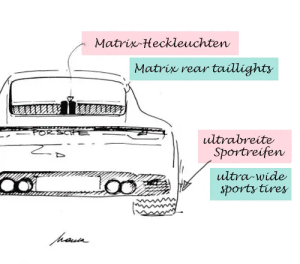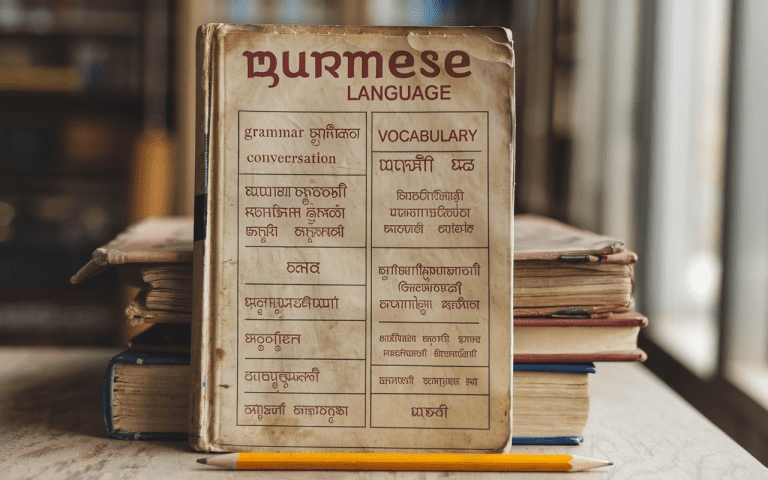Old English Language Translator: Ancient to Modern
Ever wondered how to connect Old English with Modern English? The Old English Language Translator is a key tool. It helps us dive into the Anglo-Saxon era’s language. This translator makes ancient texts more accessible and interesting. In combination with modern web translation tools like BiRead, learning from historical texts becomes even more engaging, allowing users to read in multiple languages at once.

Talking Points
- Access the Anglo-Saxon era’s rich language through accurate translations between Old English and Modern English.
- With tools like BiRead, bilingual readers can switch effortlessly between historical and modern texts, enhancing their understanding of language evolution.
- Explore Old English’s unique features, like its character set and grammar, with the translator’s help. Similarly, BiRead’s bilingual display feature allows side-by-side translation for modern languages, making multilingual reading more immersive.
- Unlock ancient texts’ wisdom and cultural value by linking the past to the present.
- Discover fuzzy matching and approximate word searches to understand Old English’s subtleties.
- Appreciate the translator’s developers for their work in preserving historical linguistics. This complements BiRead’s support for over 130 languages, offering learners and linguists diverse language tools for cross-cultural understanding.
Introduction to Old English Language Translation
Old English that is also known as Anglo-Saxon began in the 5th century. It offers a window into the way of life, stories, and past events of that era. However, bringing Old English into modern language remains a complex task.
Understanding the Relevance of Old English
The Old English language is very important. It shows that over 50 percent of today’s common words come from it. More than 75 percent of the top hundred words in English today also have Old English roots.
Moreover, over 80 percent of today’s common words in English come from Old English. This shows how deeply Anglo-Saxon has shaped our language.
Challenges in Translating Ancient Texts
Translating Old English texts is a tough job. The language had complex grammar and word order. It also had unique characters like the runic thorn (þ) and eth (ð). Just as Old English presents its own translation hurdles, users overcoming language barriers in modern contexts can benefit from BiRead’s bilingual subtitle feature when navigating complex texts like news articles or videos.

The Old English translation process faces many challenges. The language had three main dialects: West Saxon, Kentish, and Anglian. Over time, it changed a lot, making translation even harder. BiRead similarly addresses challenges by tailoring translation systems for different platforms, offering seamless bilingual reading experiences.
These challenges in translating ancient texts from Old English to modern English are significant. Tools like the Old English Translator help make medieval literature and historical linguistics more accessible to everyone.
Exploring the Old English Translator Tool
The Old English Translator is a powerful tool for translating Old English to modern English. It’s designed to handle the unique aspects of the ancient language. For language learners using BiRead, the side-by-side bilingual display feature offers a similar experience for modern languages, allowing readers to immerse themselves in multiple linguistic contexts.
Features and Functionality
The Old English Translator has many features for scholars and casual users. Some key features include:
- High-precision translations between Old English and modern English, supporting various formats such as text, documents, and images.
- Comprehensive support for the distinct character sets of Old English, including the thorn (þ) and eth (ð) characters.
- Seamless text normalization, ensuring accurate translation by addressing variations in Old English orthography.
- Contextual information and linguistic insights to enhance the understanding of translated words and phrases.
This tool makes exploring Old English literature and historical texts easier. It helps bridge the gap between ancient and modern languages. Similarly, BiRead helps bridge the gap between modern languages, making it ideal for users studying diverse languages like Anglo-Saxon, Anglo-Saxon translation, or Old English-to-modern translation.
| Feature | Description |
|---|---|
| Text Translation | Translates Old English text into modern English with high accuracy. |
| Character Set Support | Handles the unique characters of Old English, such as thorn (þ) and eth (ð). |
| Text Normalization | Addresses variations in Old English orthography to ensure consistent translations. |
| Contextual Information | Provides linguistic insights and background information to enhance understanding of translated words and phrases. |

Using the Old English Translator, users can easily move between ancient and modern languages. In the same way, BiRead’s learning mode allows users to study modern languages by focusing first on foreign-language texts, then verifying with their native language.
Translating from Old English to Modern English
Exploring Old English is a thrilling adventure for those who love languages. The Old English Translator makes it easy to switch from Old English-to-modern translation. Just a few steps, and you’ll discover the beauty of Old English, connecting the past to today.
Step-by-Step Guide
- Find the Old English word or phrase you want to translate.
- Copy and paste it into the Old English Translator’s input field. Alternatively, if you’re working with modern texts, BiRead can help translate and display bilingual text, making language learning more fluid and efficient.
- Hit the “To Modern English” button to get the translation right away.
- Check the translation, which will be in clear, modern English.
Character Sets and Normalization
The Old English Translator works with many Old English characters, like ƿǣāċēġīōþȳáéíóúýæðÞ. This means you can translate complex texts accurately. It also normalizes the text, making sure the translation is smooth and correct.
| Old English Character | Modern English Equivalent |
|---|---|
| ƿ | w |
| þ | th |
| ð | th |
| æ | ae |
| œ | oe |

With the Old English Dictionary, you can easily move from ancient to modern languages. It helps you understand how language has changed over time. This deepens your love for words and their history.
Old English language translator
The Old English Language Translator is a powerful tool. It lets users explore the rich language of the Anglo-Saxon dictionary. This platform makes ancient texts and literature easy for today’s readers.
Whether you’re reading “Beowulf” or want to translate modern English into Old English, this tool helps. It lets you understand the Old English language, spoken from the 5th to 12th centuries in England and southern Scotland.
The website also offers many other language translation options. It caters to different tastes and styles. This shows the platform’s commitment to serving its visitors and exploring language evolution.
The Old English Language Translator is part of a range of innovative tools on the website. Users can even create their own translators. This makes exploring the English language’s history more engaging.
This translator bridges the gap between ancient and modern English. It shows how the English language has evolved over time. With it, users can see the lasting impact of Old English on our language today.
| Statistic | Value |
|---|---|
| New words introduced by Shakespeare | Approximately 1,700 |
| Examples of words Shakespeare invented | accused, addiction, advertising, assassination, bedroom, bloodstained, fashionable, gossip, hint, impede, invulnerable, mimic, monumental, negotiate, rant, secure, submerge, and swagger |
| Time period when Anglo-Saxon, or Old English, was spoken | 5th to 12th centuries |
The Old English Language Translator’s features and the website’s language offerings show a commitment. They aim to preserve and explore English language diversity, from ancient to modern times.

Fuzzy Matching: Finding Approximate Word Forms
The Old English Translator has advanced “fuzzy matching” features. It helps users find words that are close to what they’re looking for. This is great for finding words with different spellings or dialects.
The app has three ways to find words that are close matches: “Sort of Contains” (:ca), “Sort of Matches” (:ia), and “Has Exactly” (:ce). These help you find similar words, even if the spelling isn’t perfect.
Contains Approximately (:ca)
The “Contains Approximately” (:ca) feature lets users search for words with similar characters. It’s useful for finding words with linguistic variations or dialectal differences in Old English.
Is Approximately (:ia)
The “Is Approximately” (:ia) feature helps find words that are similar in length and character. It’s good for finding approximate word forms that have changed slightly over time.
Contains Exactly (:ce)
The “Contains Exactly” (:ce) feature is for finding words with the exact characters in the search query. It’s perfect for users who know exactly what they’re looking for.
These flexible search tools let you dive into the many language changes and local speech styles from the old English period. They can discover approximate word forms and understand how the English language evolved.

Translating from Modern English to Old English
The Old English Translator can change modern English into Old English. It also lets you go back in time by converting today’s words into their ancient forms. This way, you can see how old ideas and words were expressed back then.
Just type a word or phrase in Modern English and hit the “To Old English” button. You’ll get the Old English version right away. It shows how English has changed over the years and gives a peek into the Anglo-Saxon culture.
The Old English Translator’s big database makes sure the translations are right and detailed. It handles the complex grammar of Old English well. The tool also has fuzzy matching for close but not exact matches, helping you understand the context better.
If you love languages, history, or just want to know more about English, this feature is for you. It lets you translate ancient English to modern English. This way, you can explore the historical language conversion, uncover the Anglo-Saxon translation, and understanding the etymological analysis that span the ages.
| Modern English | Old English |
|---|---|
| Warrior | Cempa |
| Battle | Gefeoht |
| Freedom | Freodom |
| Enslavement | Þeowdom |
| Power | Mægen |
Conclusion
The Old English Translator is a powerful tool that lets users dive into the Anglo-Saxon era’s rich language. It makes it easy to switch between Old English and Modern English. This helps us understand and love ancient texts and literature more.
It’s great for translating famous lines from ‘Beowulf’ or seeing how old ideas were expressed. The Old English Translator is a treasure for scholars, students, and anyone interested in English history and evolution.
This translator is precise, quick, and gets the context right. It makes adding historical depth to your writing easy. It’s perfect for school projects, creative work, or historical events.
It connects the old and the new, opening up new ways to learn and explore. The English language keeps changing, but the Anglo-Saxon Translator shows its lasting importance.
It makes ancient texts clear and interesting. This tool is a bridge between the past and now. It helps us see the beauty and power of the English language in our culture and minds.
FAQ
What is the purpose of the Old English Translator?
The Old English Translator helps translate between Old English and Modern English. It aims to make Old English literature and documents easier to understand. This is done by translating them into Modern English and vice versa.
What is the significance of Old English?
Early English, also called Anglo-Saxon, is the oldest type of English. It started around 400 AD. This language is a big part of how English grew over time. Learning this helps us to know how Anglo-Saxons lived and their culture back then.
What are the challenges in translating Old English texts?
Translating Old English texts is hard due to its complex grammar and character sets. It also requires adjusting for different dialects.
How does the Old English Translator address these challenges?
The Old English Translator tackles these issues by supporting various character sets and dialects. It aims to provide smooth translations. This helps users delve into Anglo-Saxon language and culture.
What makes the Early English Tool special?
This Early English Tool is easy to use. It can find words that are almost the same, even if they’re spelled a bit differently.
How does the Old English Translator handle character sets and normalization?
It supports many Old English character sets and normalizes for dialects. This ensures accurate translations across different dialects.
Can the Old English Translator translate from Modern English to Old English as well?
Yes, it can translate from Modern English to Old English. This lets users see how modern ideas were expressed in the Anglo-Saxon era.
What word-finding choices does the Early English Tool have?
It gives you three ways to look for words: “Kind of Has” (:ca), “Sort of Is” (:ia), and “Has Just This” (:ce). These help find similar words, even with slight spelling differences.
Source Links
- Introduction to Old English – https://lrc.la.utexas.edu/eieol/engol
- 50:350:411–Old English: Introduction to the Language and Literature | Ophelia Hostetter – https://hostetter.camden.rutgers.edu/50350411-old-english/
- How to Translate Old English – OpenL Blog – https://blog.openl.io/how-to-translate-old-english/
- 10 Best Old English Translator to Modern English – https://www.hitpaw.com/ai-video/old-english-translator.html
- From old English to modern English – https://www.open.edu/openlearn/history-the-arts/english-language/from-old-english-modern-english
Unlock the past with Biread's bilingual display feature.
Effortlessly explore Old English and modern languages side by side.
Try Biread Free





